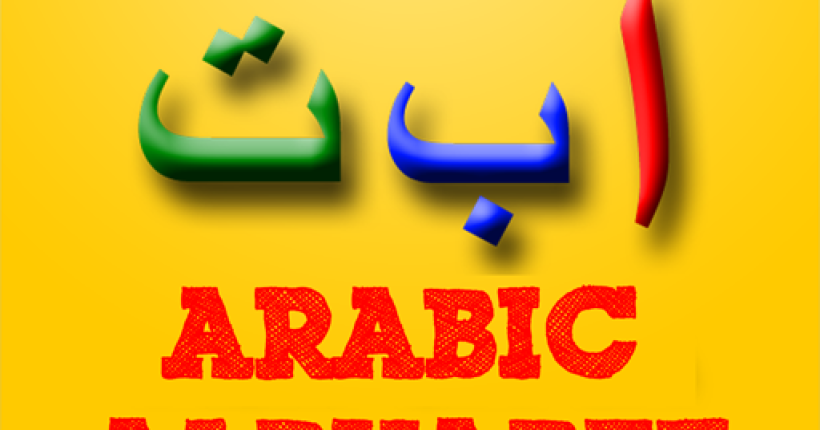For English-speaking learners who seek learning Arabic, learning the Arabic script is one of the most intimidating challenges. Because the Arabic letters curve so beautifully from right to left and change shape depending on where they are in the word, it differs from the Latin alphabet. While it may look intimidating at first, the secret to unaware familiarity with the script is Arabic writing practice for beginners.
So why bother with handwriting when it is so convenient to type out Arabic? The truth is that handwriting gets you more immersed in the language. In writing and tracing out letters, you activate muscle memory and solidify letter recognition and word construction. Typing will get you speaking faster, but handwriting acquaints you with the form and look of Arabic.
For students, who are kinesthetic and visual, writing practice is a satisfying and beneficial process. Aside from improving reading and writing, it also improves learning Arabic through interaction and fun.
And if you like the support of lessons from professional tutors, you don’t need to go it alone. Tareequl Jannah’s Arabic lessons are designed such that beginners like you are writing the Arabic handwriting confidently, step by step.
The Building Blocks of Arabic Handwriting
If you are a complete novice, the key to writing confidently is getting the character of Arabic handwriting right. Arabic does have a rhythm and style, and once you’ve got the basics of it, the rest will come naturally.
The Right-to-Left Principle
In contrast with the English language, Arabic is both written and read from the right to left. It will feel extremely strange at first because it is so fundamentally different, but with practice, your mind will accept it. To start, attempt to write single letters on the right-hand side of the page and practice them towards the left.
The 28 Letters
There are 28 letters in the Arabic alphabet, with no special small capital and capital like in English. Instead, there are many different forms of each letter depending on where it appears in a word. It’s quite similar to one form that is altered just enough so that they read well together.
The Four Forms of Arabic Letters
This is probably the most important (and most confusing to beginners) concept. Each letter may have up to four forms:
Isolated: when it appears on its own (e.g., ب).
Initial: when it appears at the beginning of a word (e.g., بـ).
Medial: when it appears in the middle, attached to letters on both sides (e.g., ـبـ).
Final: when it appears at the end of a word, attached only to the preceding letter (e.g., ـب).
Their mastery is the secret of effortless reading and writing. One useful tip is to practice each letter in all four forms prior to the next, that is the best Arabic writing practice for beginners.
The “Unfriendly” Letters
Not all Arabic letters get to join! Six letters ا, د, ذ, ر, ز, و don’t join with the letter following them. For example, in the word باب (door), the first two letters are joined (با) but the last ب is not joined because it is after an ا.
At first, this rule is annoying, but it is more readable once you are accustomed to looking at these “hostile” letters.
Want step-by-step instructions on how to conquer these shapes? Tareequl Jannah’s Arabic course divides them up into visuals, practice worksheets, and tutor support so you can build a solid foundation in handwriting.
Key Tools & Techniques for Practice
Now that you have mastered the basics of Arabic letters, practice time is next, and with proper equipment, it’s easy. Here’s how to begin for success:
Tools of the Trade
The Right Pen: Start off with a fine-tip pen or a gel pen with fluid ink as a beginner. It will help you control the strokes and see the curves of each letter. Do not use large markers initially, as they will give your handwriting a cluttered look.
The Right Notebook: Practice in a grid or double-lined notebook to give shape and keep your letters straight. There is practice notebooks for Arabic handwriting specifically made.
Worksheets: Free printable tracing worksheets are what you require for Arabic writing practice for beginners. They keep your hand steady when you practice writing letters and linking them, like “connect-the-dots.”
How to Practice Arabic writing
Here is how to practice Arabic writing easily step by step:
Start with Tracing
Don’t write freehand right away. Begin by tracing letters. This creates muscle memory and gets your hand used to Arabic curves and strokes.
From Letters to Words
Once you are comfortable with individual letters, begin combining them to create little words. For example: باب (door), بيت (house), كتاب (book). At this level, you notice how the four forms of letters combine automatically.
Use Diacritics (Harakat)
Arabic also has short vowels, harakat, which are indicated by small marks above or below letters (like َ, ِ, ُ). These are useful for anyone starting out as they guide pronunciation and prevent confusion between words that are spelt alike.
Consistency in the flow of one’s day
Ten minutes a day of Arabic writing practice for beginners is far more effective than a weekly practice session of an hour. Consistency enables you to memorize shapes and relationships and keep the process enjoyable instead of terrifying.
For structured worksheets, guided writing drills, and feedback from expert teachers, consider joining Tareequl Jannah’s Arabic courses. You’ll get the exact tools and methods needed to make your handwriting practice both effective and enjoyable.
How to Make Practice Fun & Engaging
Practicing handwriting need not be boring. The more you can make it fun and engaging, the faster your ability will grow. Some ideas to keep you motivated are as follows:
Practice with a Purpose
Practice English words in Arabic script: Start writing your name, quotes that you like, or even common English words in Arabic alphabets. It is satisfying and also connects the two languages.
Translate children’s short stories: Nursery rhymes or short stories are ideal as they involve basic vocabulary and repetition.
Maintain an Arabic to-do list or diary: Even sentences a day, bringing Arabic into life through its usage for recording everyday things.
Gamified Learning
Learning can be enjoyable, too. Take advantage of apps, flashcards, or websites that let you memorize letters, practice tracing, and quiz yourself in a game format. Most students find that they can sit there for hours as long as you make writing a game.
Calligraphy as Inspiration
Arabic calligraphy is a beautiful art many students dream of. Although more complex than everyday handwriting, having calligraphy as your long-term goal can encourage you to keep on practicing. Imagine going from basic writing exercises to writing your own ornamental Arabic quotes!
If you prefer to streamline your learning experience, Tareequl Jannah’s Arabic classes alternate formal classes with interesting practice methods to motivate you from day one.
FAQs
Can you learn how to write Arabic alone?
Yes! Provided with the right materials, worksheets, and daily drill, you can surely learn to write Arabic on your own. But for the majority of students, it is faster and less frustrating to be taught formally by a tutor. That way, you can avoid learning bad habits to begin with.
Is handwriting in Arabic easy?
Arabic writing can initially appear to be messy because of the cursive and variable nature of the letters. But once you get accustomed to the system of joins, it is significantly easier. The majority of students, with a daily bit of practice, are writing with confidence within a matter of weeks.
Should I first learn to read or speak Arabic?
Speaking tends to come naturally to a student, but learning reading and writing Arabic early on will actually make your speaking all the stronger. Writing introduces you to words earlier and pronunciation gets better when you also learn diacritical marks. Learn them together, if you can.
How long does it take to write Arabic?
You’ll be capable of reading and writing the alphabet within weeks with worksheets and regular practice. Facility to write by hand (writing rapidly and easily every time you writ) however, requires constant practice over the several months. The process of learning handwriting with Arabic isn’t significantly different from learning a musical instrument; your competence will be a result of practice!
You can speed up your learning process remarkably with the Tareequl Jannah Arabic lessons and Arabic writing practice for beginners to learn step by step with experienced instructors, and get feedback you cannot get with self-learning.


